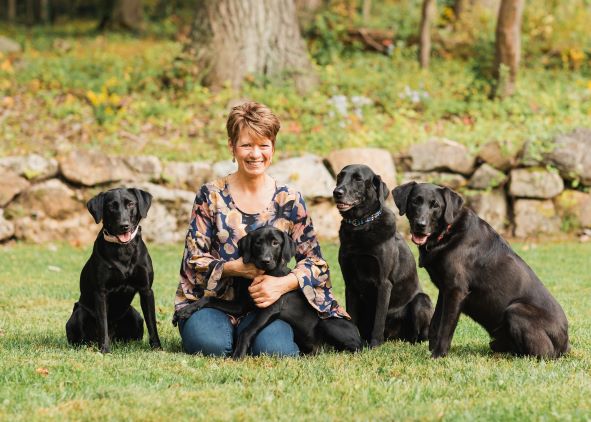Intro:
Heeling is easily the most complex exercise in competition obedience. Our dogs are required to attend to multiple tasks simultaneously, while ignoring distractions and pressure. They must do this for an extended period with focus and precision. Nothing with heeling is inherently self-reinforcing or natural. Personally, I want a dog that is animated and relaxed when heeling. Because of that, I am not in a rush. It takes me years of training to get the result I want. Why so long? Because a confident dog is a happy dog. And confidence comes from a clear understanding of all the pieces that comprise “heeling”. Many dogs understand some of the pieces, but not all. Crystal clear communication is the key to great heeling.
I break heeling down into three pieces: focal point; position; and engagement. I ensure that my dog has a solid understanding of each piece. Then the dog must multi-task and maintain all three pieces while moving at a normal pace, slow, fast and all the turns. I make sure my dog has the ability to maintain criteria with all of these pieces before putting it all together.
Once we start putting it together, we are extending the length of the chain. That requires mental endurance. This is a skill that must be taught. The dog must learn to maintain focus for a full heeling pattern. When we start fading rewards dogs often lose attitude. This happens because in the absence of information the dog is not sure if they are right or wrong. They lose confidence. That typically looks like the dog is losing attitude, is “stressing” up or down, is “checking out”, isn’t motivated, etc. We need to teach the dog that the absence of information actually means “you are right, just keep going! Your jackpot will come.” I teach that very systematically.
Last but not least, our dogs must perform while ignoring distractions and pressure. Actually, I want to go one step further. I want distractions and pressure to be a CUE for a positive conditioned emotional response. How cool would that be? We will do that in this course.
BREAKING IT DOWN
FOCAL POINT: I believe the dog needs a focal point because in the absence of one the dog doesn’t know where to look. The dog can, essentially, look anywhere they want. Which means they are going to get distracted, it’s inevitable. There are just too many interesting things happening in the world. Things that our dogs are genetically wired to attend to. If they have a focal point, by default they are not looking around. Personally, I use my face as a focal point. My personal training relies heavily on eye contact. Eye contact is an emotional anchor and it’s one of the ways I communicate with my dogs. That being said, no need to reinvent the wheel. Many people use an armband as a focal point and have great success with it. If you have a smaller dog, it makes much more sense to use your hand as a focal point. Some people use their armpit. All of that is fine. What IS important is that you are consistent with it. Your dog must know what the focal point is AND you must have a physical and verbal cue that means “look at the focal point”. And, of course, your dog must understand what the cue means. If your dog loses focal point, you must be able to clearly communicate what the dog should be doing.
POSITION: Back in the day we only taught our dogs focal point. It wasn’t until years later that I realized my dogs were losing points on heeling and I wasn’t sure why. I started watching teams with dogs that always scored well in heeling. I realized that in comparison, my dogs were always a bit forged. That’s when I started teaching “position”. Since then, my dogs’ heeling is super tight. Their accuracy has gone way up. So has their understanding. Which creates more confidence. I teach position as a game. It’s just a trick. Treat it that way, and your dogs will love it. I often use the position game as a warmup. Keeps my dogs sharp AND their attitude goes way up. Once it has been taught, it needs to be maintained. It’s common for students to teach it well, then over time loosen their criteria and it slips. Maintaining criteria is fair for the dog. If you don’t it leads to confusion which results in stress and a decline in attitude. When teaching position I make sure to also use a specific physical and verbal cue that the dog understands means “stay on my left leg”.
 Instructor: Petra Ford
Instructor: Petra Ford

